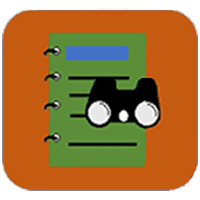Field Guide
View manual.
The purpose of this design manual is to provide restoration practitioners with guidelines for implementing a subset of low-tech tools—namely beaver dam analogues (BDAs) and post-assisted log structures (PALS)—for initiating process-based restoration in structurally-starved riverscapes. While the concept of process-based restoration in riverscapes has been advocated for at least two decades, details and specific examples on how to implement it remain sparse. Here, we describe ‘low-tech process-based restoration’ (LT-PBR) as a practice of using simple, low unit-cost, structural additions (e.g. wood and beaver dams) to riverscapes to mimic functions and initiate specific processes.
View field guide.
This field guide is a tool for the identification of 119 common forbs found in the sagebrush rangelands and grasslands of the northern Great Basin. These forbs are important because they are either browsed directly by Greater Sage-grouse or support invertebrates that are also consumed by the birds. Species are arranged alphabetically by genus and species within families. Each species has a botanical description and one or more color photographs to assist the user. Most descriptions mention the importance of the plant and how it is used by Greater Sage-grouse.
View guide.
This document was prepared to help scientists and the public, both of whom may not be familiar with bee taxonomy, learn how to practically identify bees in sagebrush steppe and shrubland habitats in southwest Idaho. We provide information to identify bees to the level of family and genus. A tentative list of the bee genera captured at sites used for insect community studies is included.
Access guide.
This guide describes the process the Klamath-Lake Forest Partnership (KLFHP) has used to plan and implement cross-boundary restoration projects to achieve improved forest health conditions on large landscapes scales. It is intended as a model other individuals and communities can modify to meet the needs of their local circumstances.
View the handbook.
The Nevada Rangeland Monitoring Handbook has been designed to provide a clear overview of the complex and often confusing world of rangeland monitoring. Included are a suite of short- and long-term monitoring methods.
View guide.
This guide offers an integrated approach to facilitate the successful establishment of native plants and pollinator habitat along roadsides and other areas of disturbance associated with road modifications. It guides readers through a comprehensive process of initiating, planning, implementing, maintaining and monitoring a roadside revegetation project with native plants and pollinator habitat.
View the guide.
The NWCG Smoke Management Guide for Prescribed Fire contains information on prescribed fire smoke management techniques, air quality regulations, smoke monitoring, modeling, communication, public perception of prescribed fire and smoke, climate change, practical meteorological approaches and smoke tools. The primary focus of this document is to serve as the textbook in support of NWCG’s RX410, Smoke Management Techniques course which is required for the position of Prescribed Fire Burn Boss Type 2 (RXB2) The Guide is useful to all who use prescribed fire, from private land owners to federal land managers, with practical tools, and underlying science.
View guide.
Grazing management can be complicated with very sophisticated grazing system designs, but in this document we discuss a simple method for managing livestock to control annual grasses while allowing perennial grasses to reoccupy the sites and generating more animal production. It’s called “Green and Brown” grazing to manage annual grasses: graze when invasive annual grasses are green and desired
species are brown. This strategy is also known as time-controlled, short-duration, high-intensity grazing.
View guide.
The Interagency Fire Unmanned Aircraft Systems Operations Guide standardizes the processes and procedures for interagency use of unmanned aircraft systems (UAS), including pilot inspections and approvals. In support of fire management goals and objectives, the aviation community references these standards to utilize UAS in a safe, effective, and efficient manner. This guide further serves as a risk assessment for fire UAS operations and meets federal requirements for aviation safety and operational planning pertaining to recurring aviation missions. Agency level policy and guidance is provided through established federal or state plans and processes.
View guide.
The following framework 1) advocates deepening democratic practices at the local and regional levels, 2) seeks to put forth the principles and practices defining this emergent field, and 3) outlines resources for community-based institutions implementing community-driven planning processes.


